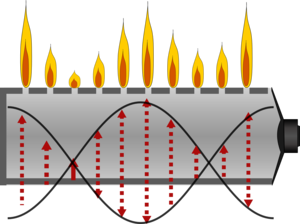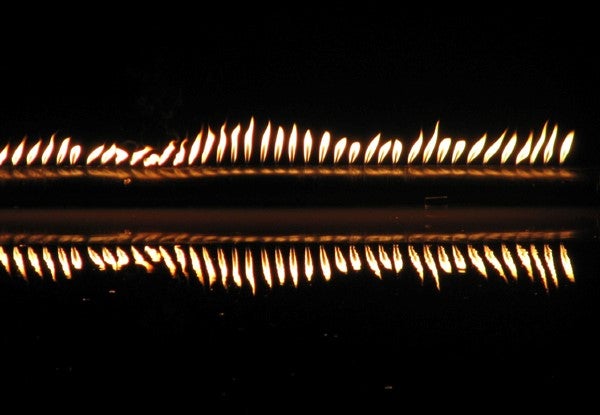W.3(1) – Organ Pipe
Vibrations within an organ pipe produce sound waves. Loud tones can be produced by blowing on the organ pipes or connecting them through a rubber hose to the air supply faucet. Three different tones are available and one wooden pipe with sliding piston.The resonant cavity’s length can be varied to provide tones of varying pitch. In conjuction with a microphone, amplifier, and oscilloscope, the relationship between wave frequency and tone can be investigated.
Click here to see a video of this demo.
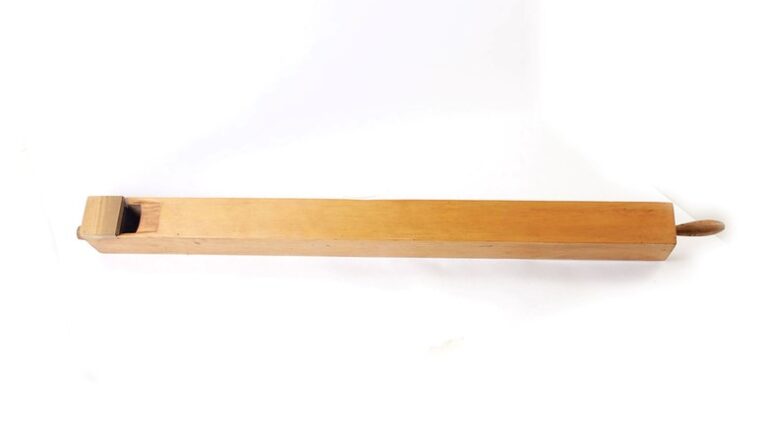
W.3(2) – Electric Buzzer in Vacuum
This apparatus has a stand with an electric buzzer and a lamp, both connected to a remote switch. The vessel is covered by a large bell jar and is connected to a vacuum pump. While the jar is in place and the lamp on the buzzer will ring. Now turn the vacuum pump on. Wait a few minutes while air is evacuated from the bell jar. The buzzer will ring fainter and fainter until it cannot be heard anymore. When the valve is opened the buzzer can be heard again. This demonstrates the need of a material medium for sound waves to propagate.
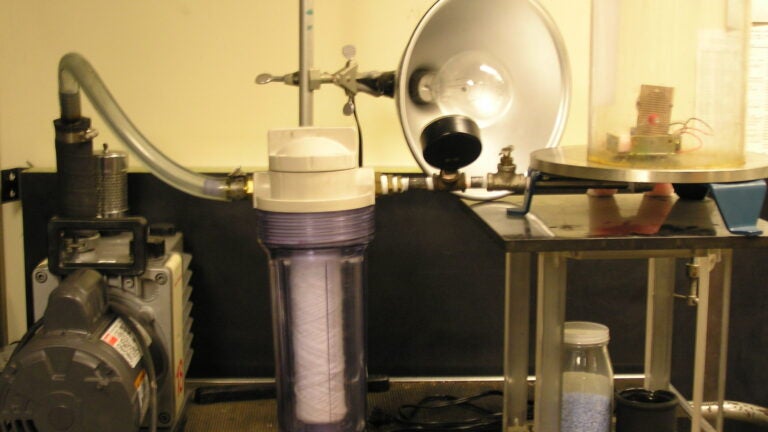
W.3(3) – Resonance Apparatus
Determine the standing wavelength of sound, using a tuning fork with a known frequency and a water filled tube. A tall stand holds a small water reservoir near its top and a 1.2 m plastic tube connected at its lower end to the bottom of the water’s reservoir. The reservoir can be moved up and down the stand so that the tube’s water level can be adjusted. A loud sound will be emitted when a vibrating tuning fork is brought near the tube’s opening and the water level is adjusted for the resonant cavity length. It can also be used to determine the velocity of sound on air.
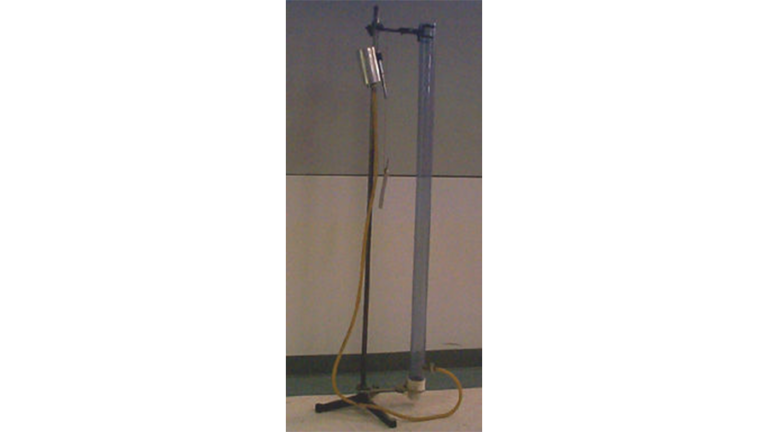
W.3(4) – Singing Pipe
This heavy, black iron pipe has a metal alloy screen fitted into one end. By heating the screen with a flame from a burner for about 10 seconds, the vertical pipe will produce a loud tone for as long as 30 seconds. The noise is produced because certain frequencies of sound from the turbulent flow of heated air resonate with the tube cavity. Turning the tube horizontally disrupts the flow of air and the sound stops. A matched pair will produce a clearly audible frequency.
Click here to see a video of this demo.
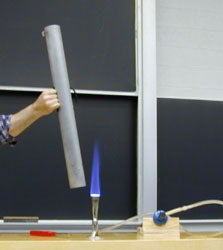
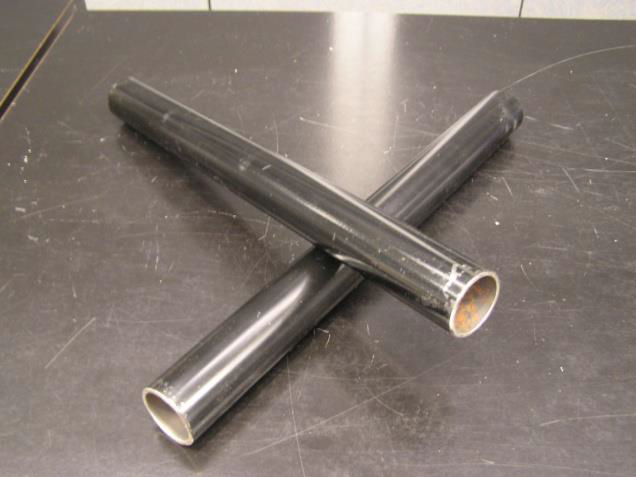
W.3(5) – Sound Tubes
When spun in a circular motion, these tubes produce a tone. As the sound tubes are spun faster, the tone steps up in frequency.
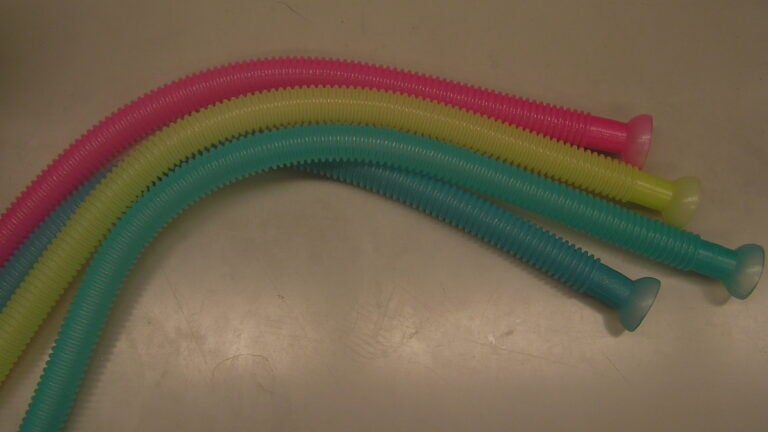
W.3(6) – Basic Boomwhacker Set
These eight labeled tubes produce the C-Major Diatonic Scale.
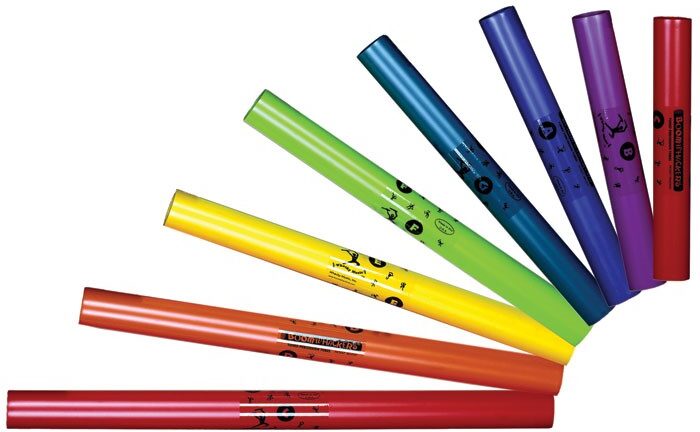
W.3(7) – Singing Rods
When your fingers are slid repeatedly along this 60-cm-long metal rod, an ear-piercing sound is generated. You control how loud the sound gets from a whisper to an auditorium-filling shriek. This is a great experiment to demonstrate the difference between longitudinal and transverse waves. Each singing rod comes with a bag of crushed rosin to lightly coat your fingertips.
Click here to see a video of this demo.
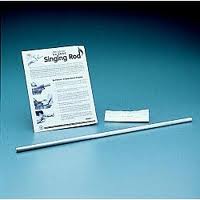
W.3(8) – Flame Tube
A loudspeaker in one end of a four-inch diameter galvanized iron tube creates standing waves in propane gas in the tube. The gas emerges out of a series of small holes in the top of the tube, forming a long line of flames when lit. Any sound resonant with the length of the tube can create standing waves in the gas which are readily visible as a pattern in the height of the flames. Both rhythm and frequency response can be seen nicely in music. An oscillator or a voice introduced using a microphone and amplifier provided with the demonstration can be used as simple sources for the loudspeaker.
Dimensions of Tube:
Length: 36″ (3 ft)
Width: 1.5″
click here to see a video of this demo.
